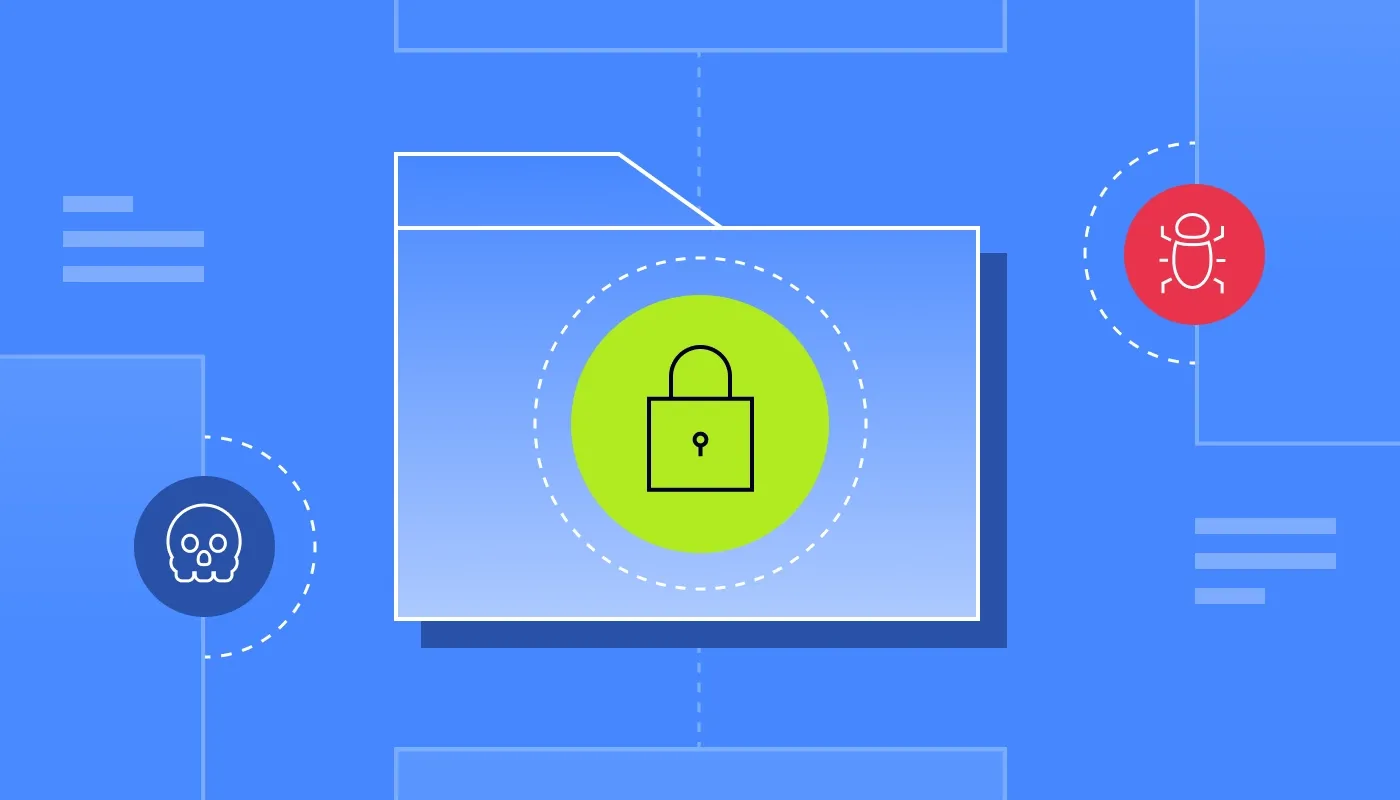Summary: Discover how cloud DLP allows enterprises to detect, monitor, and secure sensitive information in cloud environments—closing gaps in modern data protection.
The cloud has made it easier than ever to share, store, and work with data at scale, but it’s also blurred the line between “inside” and “outside” almost beyond recognition. Sensitive files can move between teams, partners, and platforms in seconds. That’s great for productivity, until the same speed makes data leakage just as fast.
IT and security teams face a moving target: tracking where cloud data resides, controlling who can reach it, and ensuring it’s handled correctly at every step. Cloud Data Loss Prevention (cloud DLP) answers that challenge by giving enterprises the ability to identify, classify, and protect sensitive information wherever it travels in the cloud.
In this article, we’ll unpack what cloud DLP is, how it works, and its benefits. We’ll also discuss how solutions like Zero Trust Network Access (ZTNA) and cloud firewalls can work in tandem to strengthen your data protection strategy.
What is cloud DLP?
Cloud Data Loss Prevention (cloud DLP) is a set of security tools and policies designed to detect, monitor, and protect sensitive data within cloud environments. Unlike traditional DLP, which focuses on standard on-premises networks, cloud DLP solutions operate across cloud platforms, SaaS applications, and cloud storage to prevent unauthorized access, data leakage, or exfiltration.
At its core, cloud Data Loss Prevention combines data classification, access controls, and automated enforcement of data handling policies. It works by identifying sensitive information—such as customer records, financial data, or intellectual property—and then applying rules to control how that data can be shared, stored, or moved.
This approach helps organizations reduce the risk of data breaches, meet compliance requirements, and maintain tighter control over cloud data without disrupting legitimate workflows.
Keep your data safe: get the DLP guide
Simple steps to protect sensitive data, prevent breaches, and stay compliant
How cloud DLP works
Data discovery and classification
Cloud DLP solutions begin by locating and understanding the sensitive data within your cloud environments. This discovery process spans cloud storage, SaaS platforms, and data in transit. Once identified, the information is classified based on content, such as financial records, personally identifiable information (PII), or intellectual property, as well as context and metadata.
This classification is essential for applying precise data security controls and aligning with compliance requirements.
Automatic enforcement of data protection policies
With data classified, the next step is policy enforcement. Cloud Data Loss Prevention tools apply predefined rules to control how data can be shared, stored, or transferred. For example, a file containing customer payment details might be automatically encrypted, restricted to certain teams, or blocked from leaving approved cloud platforms.
These access controls and data handling policies reduce the risk of data leakage, data exfiltration, and exposure to unauthorized parties, without disrupting legitimate business workflows.
Continuous monitoring of cloud activity for risky behavior
Modern DLP solutions operate in real time, monitoring data interactions to spot signs of policy violations or risky behavior. This could include detecting excessive permissions, unusual download patterns, or attempts to move sensitive data to unapproved destinations.
Continuous monitoring ensures potential threats are addressed before they lead to data breaches or costly compliance failures. Alerts, automated remediation, and integration with broader security systems make this an active layer in ongoing data protection efforts.
Why securing cloud data is harder than ever
The shift to cloud-first operations has brought undeniable agility, but it’s also dismantled the clear security boundaries that once defined corporate networks. Sensitive data now moves fluidly between cloud environments, remote employees, third-party vendors, and an expanding array of SaaS tools. Each connection point creates more surface area for mistakes, oversights, and malicious activity.
Traditional perimeter-based defenses struggle in this model. Once cloud data is outside the on-premises network, relying solely on firewalls or VPNs offers little visibility into how that data is being handled. Without strong data classification and detailed access controls, organizations risk losing track of where their sensitive data is kept, who is using it, and whether it’s protected.
Adding to the challenge, not all risks come from outside. Misconfigurations, weak data handling policies, insufficient employee training, and accidental sharing often lead to data leakage or data loss—sometimes without triggering alerts until it’s too late.
Cloud DLP solutions address this by providing visibility and automated safeguards, but the speed and complexity of cloud adoption mean that even with strong tools, data security requires constant attention and improvement.
Related articles

Joanna KrysińskaMar 20, 202512 min read

Rūta TamošaitytėAug 28, 20256 min read
Best practices for implementing cloud DLP effectively
Start with a comprehensive data inventory and classification
Before a cloud Data Loss Prevention tool can protect anything, you need a clear picture of what you’re securing. Begin by mapping out all cloud data assets, including files stored in cloud environments, SaaS platforms, and shared repositories.
Use data classification to identify sensitive data such as intellectual property, customer information, and regulated records. Accurate classification ensures policies are applied where they’re most needed and prevents gaps that could lead to data leaks or compliance failures.
Align data protection policies with business objectives
Overly restrictive data handling policies can frustrate teams, while too permissive ones can expose the business to unnecessary risk. The most effective cloud DLP solutions balance security with usability by tailoring rules to specific workflows, compliance requirements, and data types.
For example, you might allow internal sharing of certain project files while blocking uploads of sensitive financial documents to external storage platforms.
Integrate cloud DLP with broader security controls
Cloud Data Loss Prevention is more effective when paired with complementary safeguards. Integrating DLP with identity and access management, endpoint protection, and logging systems allows for better detection of policy violations and more precise response actions.
This layered approach improves overall data security while reducing the likelihood of data breaches caused by misconfigured settings or insider threats.
Monitor, refine, and educate continuously
DLP isn’t a “set it and forget it” solution. As cloud environments evolve, so do the risks. Regularly review activity logs, adjust policies, and fine-tune classification rules to address emerging threats.
Pair technical controls with ongoing employee training to minimize accidental data leakage and reinforce the importance of handling sensitive data responsibly. Over time, these small adjustments strengthen both your technical defenses and your organization’s security culture.
What to look for in a cloud DLP solution
Choosing the right cloud DLP platform means looking beyond basic feature checklists and focusing on how well it fits your organization’s workflows, compliance needs, and long-term security goals.
For IT and security leaders, the following capabilities should be non-negotiable:
Accurate detection of sensitive data. The solution should accurately identify and label sensitive records, intellectual property, and other high-value assets within cloud data environments. False positives waste time; missed detections lead to data loss or compliance failures.
Granular, customizable policies. Effective Data Loss Prevention (DLP) tools let you create data handling policies tailored to your industry, regulatory requirements, and internal processes. This ensures you can adapt enforcement to different departments or data types without creating bottlenecks.
Strong incident prevention and response. Look for automated controls that stop policy violations before they result in data breaches, combined with detailed logging and alerting to speed investigation when incidents occur.
Ease of integration. The best cloud DLP solutions connect seamlessly with your existing security stack, cloud services, and productivity tools. This maximizes coverage without requiring disruptive changes to established workflows.
How NordLayer helps secure cloud environments
Securing cloud environments requires more than one layer of defense. NordLayer’s solutions are designed to work together, giving organizations precise control over access, internet security, and user/device behavior visibility.
Zero Trust Network Access (ZTNA) enforces a “never trust, always verify” model, ensuring only authorized users and devices can reach your cloud resources. This allows businesses to restrict access to applications and environments according to their needs, reducing the attack surface and minimizing the risk to sensitive data.
Cloud Firewall adds another layer of protection by filtering traffic to cloud applications. It blocks malicious connections and enforces network segmentation by ensuring only authorized traffic can interact with your systems at the user, IP, protocol, and port levels. This helps prevent external threats from escalating into incidents.
When combined with cloud Data Loss Prevention solutions, organizations gain end-to-end protection for sensitive data—from controlling access and monitoring activity to stopping data loss before it occurs. NordLayer’s approach aligns with modern Data Loss Prevention strategies, helping companies protect critical assets without sacrificing efficiency or agility.
Contact sales to see how NordLayer can help your organization.
Cloud DLP FAQ
What’s the difference between cloud DLP and endpoint DLP?
Cloud Data Loss Prevention (DLP) focuses on securing data stored, processed, or shared in cloud environments, including SaaS platforms and cloud storage. Endpoint DLP, on the other hand, protects data directly on devices such as laptops, desktops, and mobile devices—regardless of whether the data is in the cloud or on-premises. Many organizations use both to maintain consistent protection across all points where data is created, accessed, or transferred.
Can you use cloud DLP and CASB together?
Yes. Cloud Data Loss Prevention (DLP) and Cloud Access Security Broker (CASB) solutions complement each other. CASB provides visibility, compliance checks, and threat protection for cloud applications, while cloud DLP focuses on detecting and preventing unauthorized sharing or movement of sensitive information. When integrated, they deliver stronger cloud security by combining access governance with content-based protection.
What are other types of DLP besides cloud-based solutions?
Beyond cloud Data Loss Prevention (DLP), there are network DLP and endpoint DLP. Network DLP monitors and controls data moving across your corporate network, such as email, file transfers, or web uploads, while endpoint DLP secures data directly on user devices. Some organizations also deploy storage DLP, which scans databases and file systems for sensitive content, ensuring it’s properly classified and protected.

Aistė Medinė
Editor and Copywriter
An editor and writer who’s into way too many hobbies – cooking elaborate meals, watching old movies, and occasionally splattering paint on a canvas. Aistė's drawn to the creative side of cybercrime, especially the weirdly clever tricks scammers use to fool people. If it involves storytelling, mischief, or a bit of mystery, she’s probably interested.












